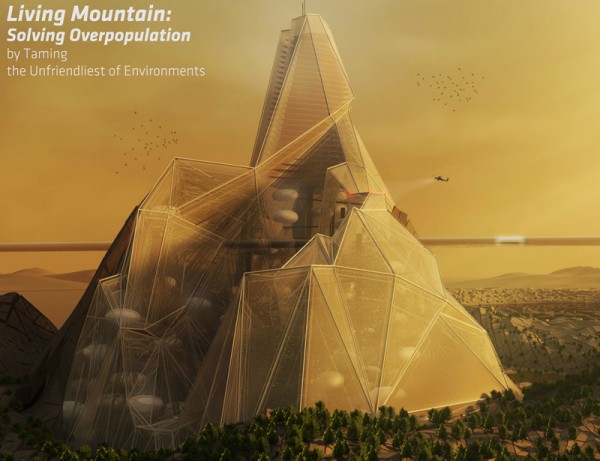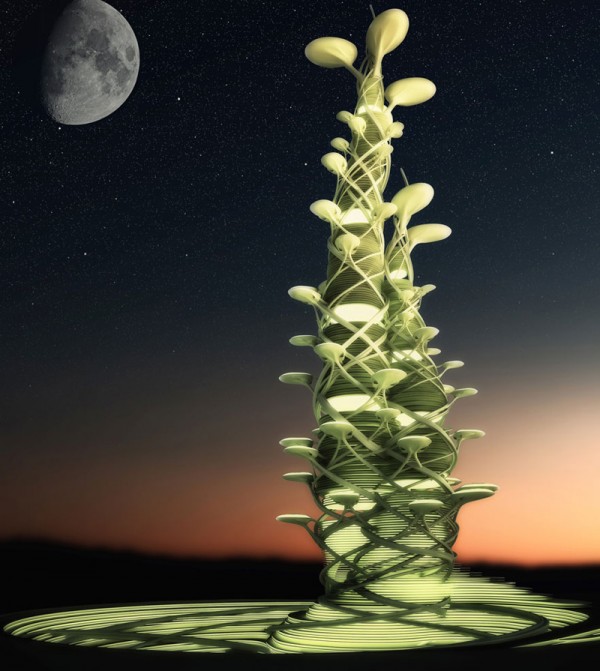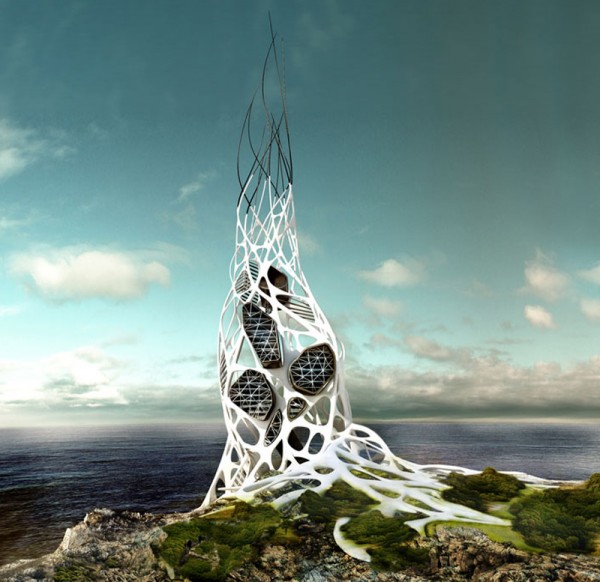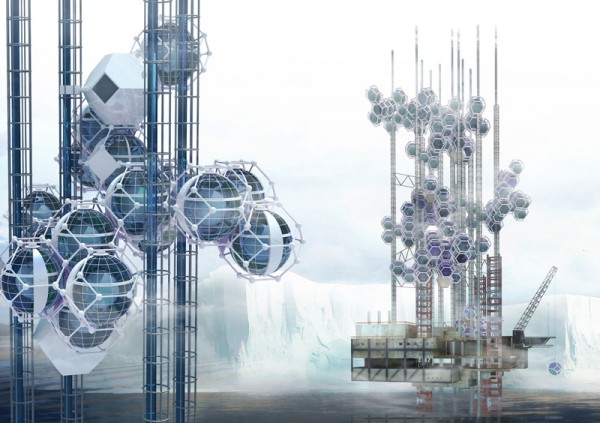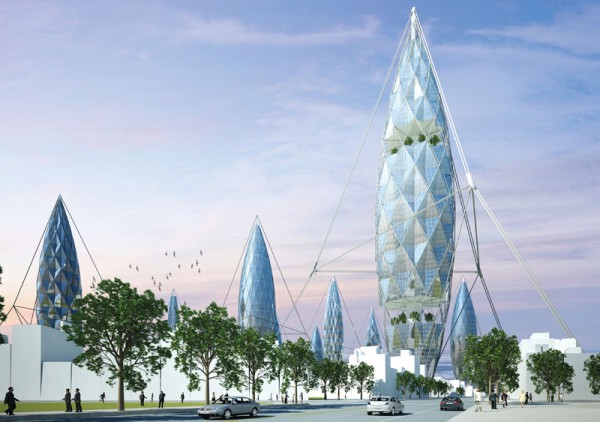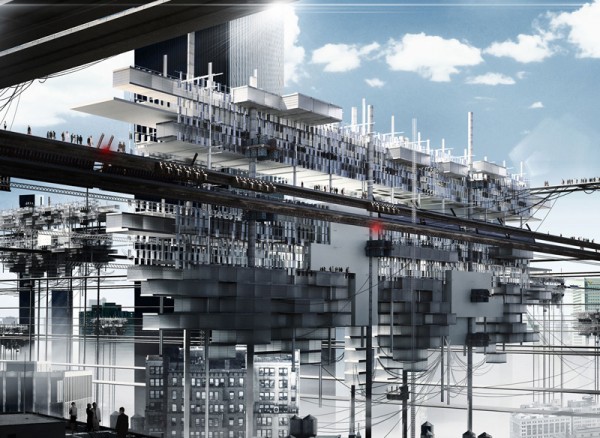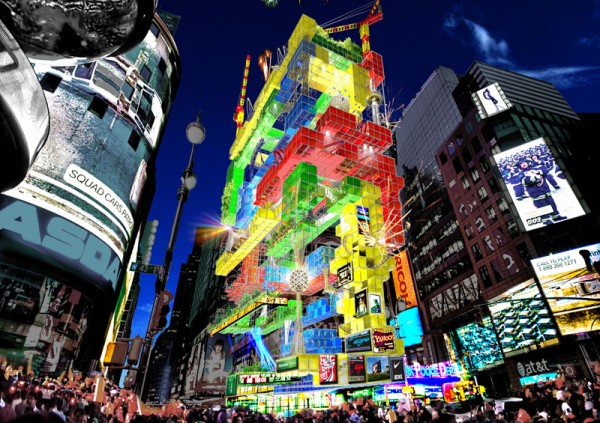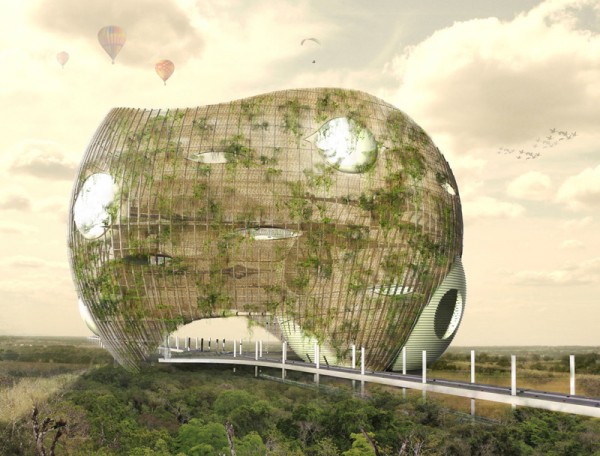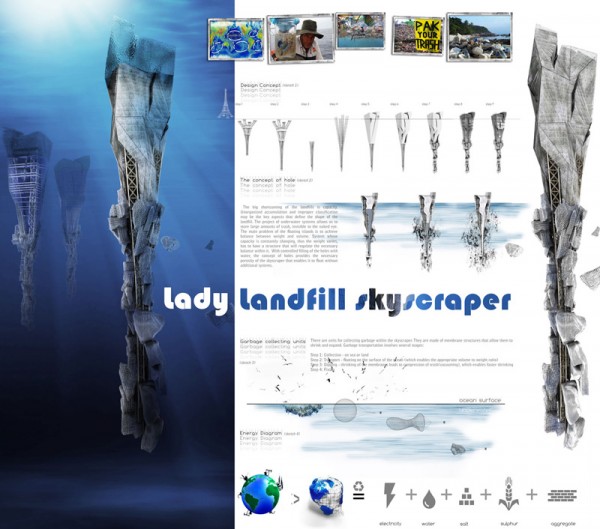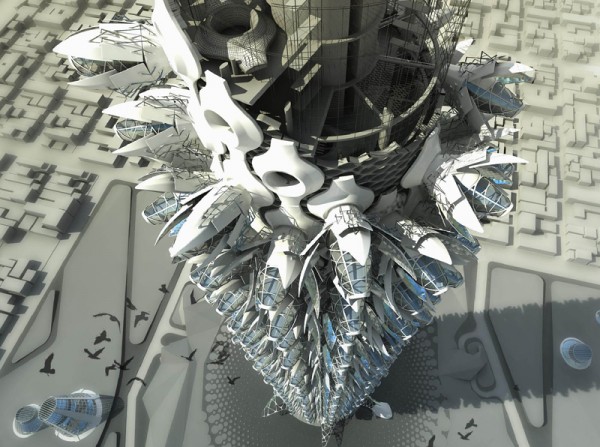Honorable Mention
2011 Skyscraper Competition
Anna-Maria Simatou, Marianthe Dendrou
Greece
The Living Mountain is a city-like skyscraper for one of the Earth’s harshest environments: the desert. Fertile land is gradually being transformed into deserts due to global warming. This project is located in one of those regions, the desert of Taklamakan, in the northwestern region of China.
This high-rise conglomerate, in conjunction with man-made lakes, could gradually transform the desert into a habitable environment. The Living Mountain would extract water from the regions substrate and through its smart use, treatment, circulation, and controlled evaporation, could create a microclimate inside the structure.
The housing areas are envisioned as “living pods” of 2,000 square-feet with easy access to all the facilities. Rainwater is collected and circulated on top of the super-structure and freely cascades to the atrium while filtering the air and promoting the growth of indoor vegetation. Read the rest of this entry »

